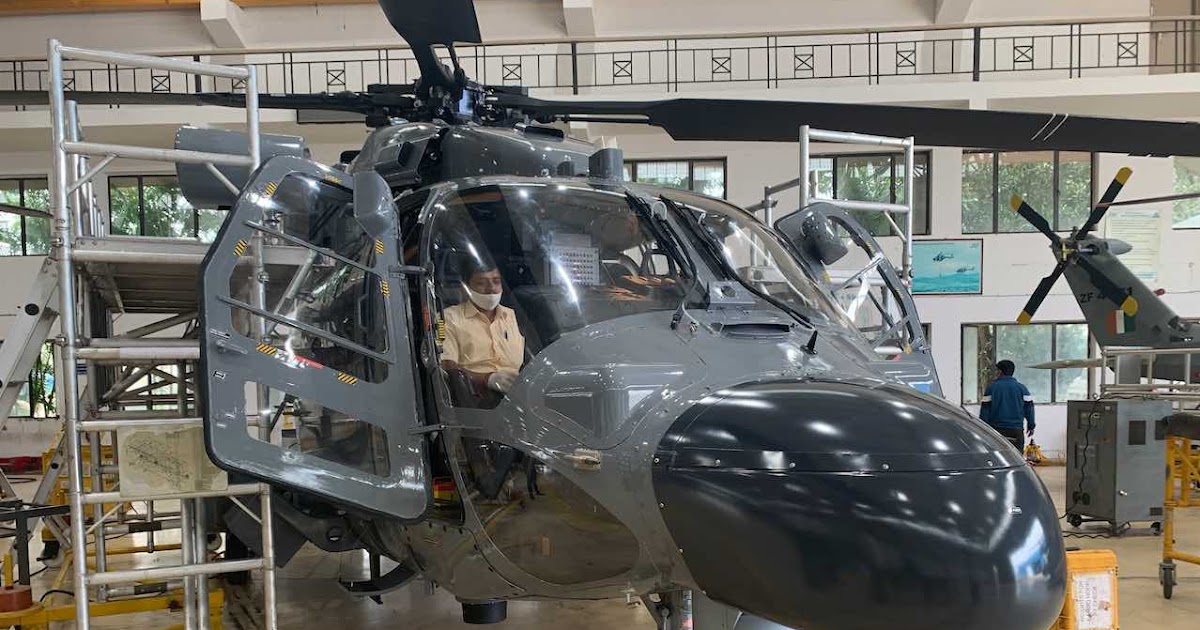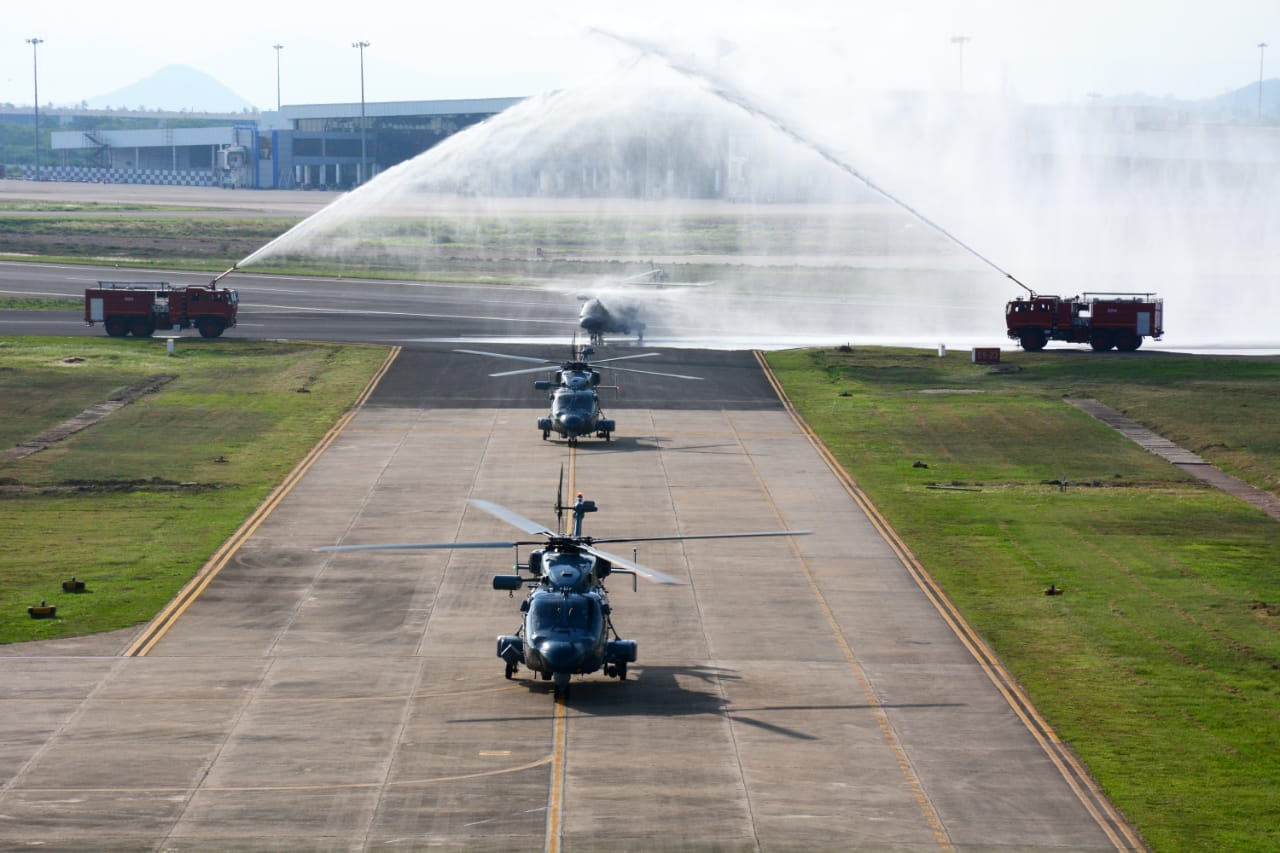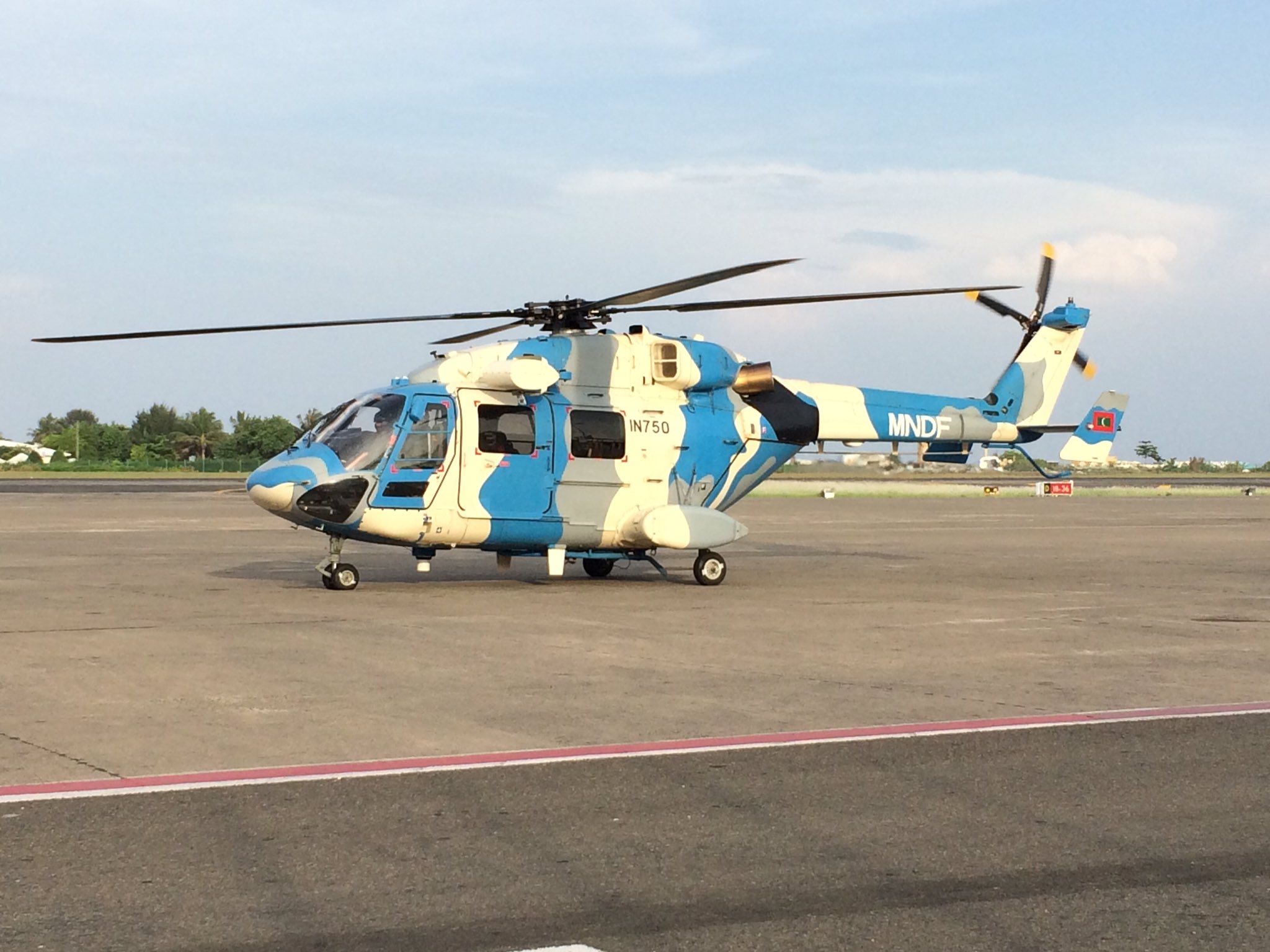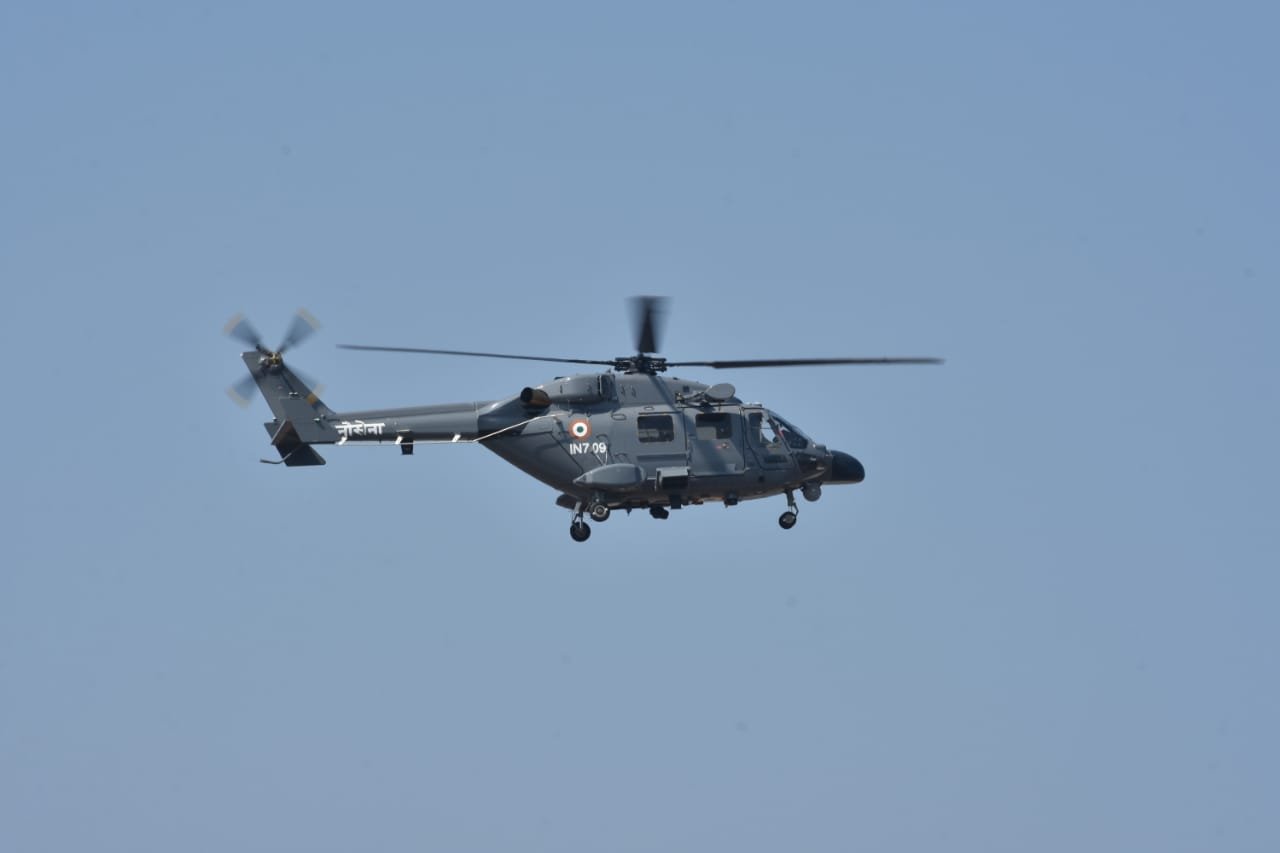Latest Thread
- Iran Jaljaleh Aerial Mines Against Drones and Helicopters
- Ukraine Armored vehicles are being equipped with "Yezh" protection.
- Is Denmark's new ground-based air defense a new IC4 scandal?
- Analysis Think tank: Behind new data center in Norway lies the White House's strategy for AI world dominance
- Poland SAAB A-26 Submarine for Polish Navy
You are using an out of date browser. It may not display this or other websites correctly.
You should upgrade or use an alternative browser.
You should upgrade or use an alternative browser.
Good news @MisterLike , they are finally going to induct the first one.....hopefully it kicks off larger orders...
I still don't understand why IAF is getting the majority of these when LCH's primary role is to support mechanized columns and should be under Army aviation. We all know of the coordination between IAF & IA...it's pretty obvious either of em will screw up during a joint op and end up with a blame gameGood news @MisterLike , they are finally going to induct the first one.....hopefully it kicks off larger orders...
I still don't understand why IAF is getting the majority of these when LCH's primary role is to support mechanized columns and should be under Army aviation. We all know of the coordination between IAF & IA...it's pretty obvious either of em will screw up during a joint op and end up with a blame game
Hopefully further integration in the core C4I makes such things nominal compared to before.
In this regard, everyone focused on new CDS position too much over what it represents in the actual infra objective behind scenes.
I agree with your approach 100% (in the legacy and ongoing relative divergent service branch model), these helis should be under army aviation, infact I would put even Jaguars and all dedicated A2G+CAS with them too given extra-relevance of close knit formation on ground operating in tandem.
RAPID concept started by our great general Sundarji...should involved total combined arms approach to aerial domain (as it pertains to ground war, which the army + land forces are tasked to) as well.
The time when ground to air comms + sensoring (and vice versa) were zero to shaky (era of luftwaffe rather than heer having Stukas etc)...are long gone....so the argument also should evolve to meet the new modern age.
The entire military must think of this way, what is the primary direct use of the weapon platform....and who should thus have primary C&C dibs and force integration.
Anyway with the strengthening of C4I, I hope the drama is just drama sake stuff....and when push come to shove there is core integration that smooths over the grey areas of contention between service branches.
This can all be simulated, tested and exercised and prepared for.
The helo still needs Helina (Helo launched version of Nag ATGM) to be inducted. Also, HAL was looking to integrate a self protection suite. I wonder if they did that already
Manila is evaluating a maritime version of the Dhruv light helicopter, which HAL has developed for the Indian Coast Guard
By Ajai Shukla
HAL, Bengaluru
Business Standard, 1st Dec 21
Illustrating the benefits of developing indigenous weapons platforms, Hindustan Aeronautics Ltd (HAL) is poised to sell the Philippines at least seven Dhruv Advanced Light Helicopters (ALH) and eight Dornier 228 aircraft, possibly through a Government of India line of credit.
Manila is evaluating a maritime variant of the Dhruv ALH, which HAL has developed in Bengaluru on request from the Indian Navy and Coast Guard. It involved integrating the Dhruv Mark III with maritime policing capabilities, converting the plain vanilla ALH into a variant called the Dhruv Maritime Role (MR).
As the “original equipment manufacturer” (OEM) of the Dhruv, HAL developed the Dhruv MR without being blocked by end user restrictions.
The Philippines contracts will be worth a record Rs 3,000 crore, India’s largest-ever export of defence equipment. If both aircraft perform well and deliver high serviceability rates, further export orders could follow.
According to industry and market assessments, Manila’s maritime helicopter purchase has boiled down to a straight contest between two helicopters – the Dhruv MR and Airbus Helicopters Panther AS565.
HAL had first revealed Manila’s interest in buying these two “Made in India” platforms in its Annual Report for 2020-21. Now, HAL’s chairman, R Madhavan, has confirmed to Business Standard: “Our prospects in the Philippines look good.”
“Both helicopters cost roughly the same, but we will offer a better support package, including spares and support from HAL. We will also offer Manila the option to do its own MRO. We also will price the Dhruv MR aggressively,” says Madhavan.
Contacted for comments, an Airbus spokesperson stated: “We do not comment on discussions we might or might not be having with our customers.”
The Dhruv ALH has been growing in sophistication, as well as in cost. The initial ALH version – the plain vanilla Dhruv Mark I – was sold to the military for Rs 45-50 crore. The cost rose to Rs 70 crore for each Dhruv Mark III, with its glass cockpit and anti-vibration dampers. With the maritime role fitments on the Dhruv MR adding another Rs 40 crore, the cost of each Dhruv MR will be about Rs 110 crore.
The specialist maritime equipment in the Dhruv MR includes: an on-board weather radar (6-7 crore); an electro-optical pod (5-6 crore); a searchlight (one crore); a tracker beam, emergency flotation gear; a VHF homing device; a traffic collision avoidance device; a rescue hoist that is anchored just below the main rotors, and a slithering device for marine commandoes.
HAL’s confidence in designing and developing helicopters is growing as it develops newer and more sophisticated variants. The HAL chief says more than 320 Dhruv ALHS have been delivered to the military. The eponymous Light Combat Helicopter (LCH), which has been regaling air show audiences with aerobatics performances, is awaiting its first orders.
On November 19, Prime Minister Narendra Modi handed over a HAL-produced LCH to the Indian Air Force (IAF). Perhaps the most promising is the single-engine Light Utility Helicopter (LUH), which HAL hopes to build 400 of.
IAF boss Air Chief Marshal VR Chaudhary asked, during a recent visit to HAL, if the Dhruv could be fitted with additional capabilities. HAL’s helicopter engineers say they replied: “Just select the systems you want. We can integrate them all into the ALH, within the limits of its flying capability.”
India’s South Asian neighbours and nearby island countries – including the Maldives, Mauritius, Nepal and now Philippines – are already operating the Dhruv ALH in small numbers and expressing interest in more. Myanmar wants the LCH.
Notwithstanding India’s growing potential as a helicopter exporter, “end user” issues still constrain its freedom of action. With the indigenous content of HAL’s choppers still in the region of 50-55 per cent, and critical systems still imported from the UK, Israel and France; exporting these helicopters requires export clearances from these supplier countries. That often requires a political consensus over which countries it is permissible to sell these choppers to. Sometimes supplier countries are reluctant to sell weaponry to countries such as Myanmar.
Despite the rhetoric over “Atmanirbhar Bharat” (self-reliant India), simple economics makes it impossible to raise indigenous content above 50-55 per cent. The composite material that the helicopter fuselage is fabricated from is imported. Nor do any Indian firms manufacture the aluminium alloys that go into the chopper, because it is not needed in quantities large enough to create economies of scale.
HAL’s engineers cite the example of ejection seats – a sophisticated product that is almost entirely monopolised by British firm, Martin Baker. Similarly, a British manufacturer, Cobham, makes mid-air refuelling gear for almost the entire western aerospace market. And, until Indian firms begin manufacturing aircraft and helicopter engines, exports of those will continue to take up 25-30 per cent of the cost of aircraft.

 www.ajaishukla.com
www.ajaishukla.com
By Ajai Shukla
HAL, Bengaluru
Business Standard, 1st Dec 21
Illustrating the benefits of developing indigenous weapons platforms, Hindustan Aeronautics Ltd (HAL) is poised to sell the Philippines at least seven Dhruv Advanced Light Helicopters (ALH) and eight Dornier 228 aircraft, possibly through a Government of India line of credit.
Manila is evaluating a maritime variant of the Dhruv ALH, which HAL has developed in Bengaluru on request from the Indian Navy and Coast Guard. It involved integrating the Dhruv Mark III with maritime policing capabilities, converting the plain vanilla ALH into a variant called the Dhruv Maritime Role (MR).
As the “original equipment manufacturer” (OEM) of the Dhruv, HAL developed the Dhruv MR without being blocked by end user restrictions.
The Philippines contracts will be worth a record Rs 3,000 crore, India’s largest-ever export of defence equipment. If both aircraft perform well and deliver high serviceability rates, further export orders could follow.
According to industry and market assessments, Manila’s maritime helicopter purchase has boiled down to a straight contest between two helicopters – the Dhruv MR and Airbus Helicopters Panther AS565.
HAL had first revealed Manila’s interest in buying these two “Made in India” platforms in its Annual Report for 2020-21. Now, HAL’s chairman, R Madhavan, has confirmed to Business Standard: “Our prospects in the Philippines look good.”
“Both helicopters cost roughly the same, but we will offer a better support package, including spares and support from HAL. We will also offer Manila the option to do its own MRO. We also will price the Dhruv MR aggressively,” says Madhavan.
Contacted for comments, an Airbus spokesperson stated: “We do not comment on discussions we might or might not be having with our customers.”
The Dhruv ALH has been growing in sophistication, as well as in cost. The initial ALH version – the plain vanilla Dhruv Mark I – was sold to the military for Rs 45-50 crore. The cost rose to Rs 70 crore for each Dhruv Mark III, with its glass cockpit and anti-vibration dampers. With the maritime role fitments on the Dhruv MR adding another Rs 40 crore, the cost of each Dhruv MR will be about Rs 110 crore.
The specialist maritime equipment in the Dhruv MR includes: an on-board weather radar (6-7 crore); an electro-optical pod (5-6 crore); a searchlight (one crore); a tracker beam, emergency flotation gear; a VHF homing device; a traffic collision avoidance device; a rescue hoist that is anchored just below the main rotors, and a slithering device for marine commandoes.
HAL’s confidence in designing and developing helicopters is growing as it develops newer and more sophisticated variants. The HAL chief says more than 320 Dhruv ALHS have been delivered to the military. The eponymous Light Combat Helicopter (LCH), which has been regaling air show audiences with aerobatics performances, is awaiting its first orders.
On November 19, Prime Minister Narendra Modi handed over a HAL-produced LCH to the Indian Air Force (IAF). Perhaps the most promising is the single-engine Light Utility Helicopter (LUH), which HAL hopes to build 400 of.
IAF boss Air Chief Marshal VR Chaudhary asked, during a recent visit to HAL, if the Dhruv could be fitted with additional capabilities. HAL’s helicopter engineers say they replied: “Just select the systems you want. We can integrate them all into the ALH, within the limits of its flying capability.”
India’s South Asian neighbours and nearby island countries – including the Maldives, Mauritius, Nepal and now Philippines – are already operating the Dhruv ALH in small numbers and expressing interest in more. Myanmar wants the LCH.
Notwithstanding India’s growing potential as a helicopter exporter, “end user” issues still constrain its freedom of action. With the indigenous content of HAL’s choppers still in the region of 50-55 per cent, and critical systems still imported from the UK, Israel and France; exporting these helicopters requires export clearances from these supplier countries. That often requires a political consensus over which countries it is permissible to sell these choppers to. Sometimes supplier countries are reluctant to sell weaponry to countries such as Myanmar.
Despite the rhetoric over “Atmanirbhar Bharat” (self-reliant India), simple economics makes it impossible to raise indigenous content above 50-55 per cent. The composite material that the helicopter fuselage is fabricated from is imported. Nor do any Indian firms manufacture the aluminium alloys that go into the chopper, because it is not needed in quantities large enough to create economies of scale.
HAL’s engineers cite the example of ejection seats – a sophisticated product that is almost entirely monopolised by British firm, Martin Baker. Similarly, a British manufacturer, Cobham, makes mid-air refuelling gear for almost the entire western aerospace market. And, until Indian firms begin manufacturing aircraft and helicopter engines, exports of those will continue to take up 25-30 per cent of the cost of aircraft.

India closes in on maritime helicopter export to the Philippines
India is likely to sell at least seven Dhruv Advanced Light Helicopters (ALH) and eight Dornier 228 aircraft to the Philippines, as part of New Delhi’s line of credit to Manila.
The maritime variant of Dhruv ALH is currently being evaluated by the Philippines. This entailed equipping the Dhruv Mark III with marine policing capabilities and transforming the standard ALH into the Dhruv Maritime Role (MR) variant, Business Standard reported.
Manila’s marine helicopter acquisition, according to industry and market estimates, has come down to a direct fight between two helicopters: the Dhruv MR and the Airbus Helicopters Panther AS565. The contract with the Philippines would be worth Rs 3,000 crore.
 Indian Navy inducted 3 indigenously-built HAL’s advanced light helicopters ALH Dhruv MKIII – (via Twitter)
Indian Navy inducted 3 indigenously-built HAL’s advanced light helicopters ALH Dhruv MKIII – (via Twitter)
India’s state-run Hindustan Aeronautics Limited (HAL) is pushing its Dhruv MR variant aggressively, stating that both helicopters are about the same price, however, HAL is ready to provide a better maintenance package, including spares and assistance. Manila would also have the option of doing its own MRO.
In its annual report for 2020-21, HAL first indicated Manila’s interest in purchasing these two ‘Made in India’ platforms. “Our chances in the Philippines appear bright,” HAL’s chairman, R Madhavan, told Business Standard. HAL manufactured the Dhruv MR as the “original equipment manufacturer” (OEM) of the Dhruv without being hampered by end-user restrictions.
As HAL develops new and more advanced variations, its expertise in the design and development of helicopters also grows. More than 320 Dhruvs have been delivered to the Army, according to the HAL chief.
In November 2013, the Indian Navy commissioned its first Dhruv (Mk I) squadron. In April 2021, the Indian Navy (IN) commissioned its first naval air squadron outfitted with the indigenously designed and developed Dhruv Mk III Advanced Light Helicopter (ALH).
HAL has been awarded a contract to produce 16 ALH Mk III aircraft, an enhanced variant with Shakti-1H engines, a new electronic warfare (EW) suite and warning systems, autonomous chaff and flare dispensers, and a better vibration control system.
Last month, Prime Minister Narendra Modi handed over a HAL-produced LCH to the Indian Air Force (IAF). The light combat helicopter includes sophisticated technologies and stealth features for combat missions. During a recent visit to HAL, IAF chief Air Chief Marshal VR Chaudhary inquired if the Dhruv might be equipped with extra capabilities.
“Just select the systems you want,” HAL’s helicopter engineers answered. “Within the boundaries of the ALH’s flying capacity, we can incorporate them all.”
With HAL’s choppers still having a 50-55 percent indigenous content but instead essential systems still flowing from the UK, Israel, and France, exporting these helicopters necessitates export permissions from these source countries.
This frequently implies political agreement over which nations these choppers may be sold to. Supplier countries are sometimes hesitant to provide weapons to countries like Myanmar.
 A Dhruv ALH gifted by India to the Maldives. (Wikipedia)
A Dhruv ALH gifted by India to the Maldives. (Wikipedia)
Despite all the hype about ‘Atma Nirbhar Bharat’ (self-reliant India), simple economics prevents indigenous content from exceeding 50-55 percent. The composite material used to make the helicopter fuselage is imported.
No Indian companies produce the aluminum alloys used in the chopper since they aren’t required in large enough quantities to provide economies of scale.
Ejection seats, for example, are a complex product that is nearly fully gobbled up by British manufacturer Martin-Baker, according to HAL’s engineers. Similarly, Cobham, another British company, manufactures mid-air refueling equipment for nearly the entire western aerospace market.
Exports of fixed-wing aircraft and helicopter engines will continue to account for 25-30% of the cost of aircraft until Indian enterprises begin manufacturing them.
It is equipped with a heavy machine gun to carry out constabulary missions in addition to special operations capabilities. The helicopters also have a detachable Medical Intensive Care Unit (MICU) to transport critically ill patients and are equipped with a variety of modern avionics, making it an all-weather aircraft.
 An Indian Navy Dhruv ALH Mark-III. (via Twitter)
An Indian Navy Dhruv ALH Mark-III. (via Twitter)
The contract for the Indian Navy entails the integration of 19 major systems with the existing ALH MK III, including IFF MKXII & ATC Xpdr with ADS-B Out, V/UHF communication system, traffic alert and collision avoidance (TCAS-I), SAR Homer system, automatic deployable emergency locator transmitter (ADELT), loud hailer, radio altimeter, rescue basket, medical intensive care unit (MICU), IADS system, AFCS, digital video recording system (SSDVR), automatic identification system (AIS), high-intensity searchlight (HISL), pressure refueling system, control grip, EO POD Rev III, surveillance radar system and 12.7 mm gun system.
Six of the 16 naval Mk-III ALHs will be outfitted with a low-frequency dipping sonar (LFDS) developed by the Naval Physical and Oceanographic Laboratory in Kochi. Bharat Electronics Limited, a state-owned company, manufactures the sonar’s units, with a slew of sub-vendors downstream.
https://eurasiantimes.com/indian-hal-dhruv-helicopter-victorious-in-philippines-defense-deal/
https://www.business-standard.com/a...export-to-the-philippines-121113001510_1.html
The maritime variant of Dhruv ALH is currently being evaluated by the Philippines. This entailed equipping the Dhruv Mark III with marine policing capabilities and transforming the standard ALH into the Dhruv Maritime Role (MR) variant, Business Standard reported.
Manila’s marine helicopter acquisition, according to industry and market estimates, has come down to a direct fight between two helicopters: the Dhruv MR and the Airbus Helicopters Panther AS565. The contract with the Philippines would be worth Rs 3,000 crore.

India’s state-run Hindustan Aeronautics Limited (HAL) is pushing its Dhruv MR variant aggressively, stating that both helicopters are about the same price, however, HAL is ready to provide a better maintenance package, including spares and assistance. Manila would also have the option of doing its own MRO.
In its annual report for 2020-21, HAL first indicated Manila’s interest in purchasing these two ‘Made in India’ platforms. “Our chances in the Philippines appear bright,” HAL’s chairman, R Madhavan, told Business Standard. HAL manufactured the Dhruv MR as the “original equipment manufacturer” (OEM) of the Dhruv without being hampered by end-user restrictions.
HAL Strengthening India’s Airpower
The Dhruv ALH has become more sophisticated while also becoming more expensive. The Dhruv Mark I, the first ALH variant, was sold to the military for Rs 45-50 crore whereas, each Dhruv Mark III, with its glass cockpit and anti-vibration dampers, costs Rs 70 crore. The maritime role fitments will add additional Rs 40 crore to the cost of each Dhruv MR, bringing the total cost around Rs 110 crore.As HAL develops new and more advanced variations, its expertise in the design and development of helicopters also grows. More than 320 Dhruvs have been delivered to the Army, according to the HAL chief.
In November 2013, the Indian Navy commissioned its first Dhruv (Mk I) squadron. In April 2021, the Indian Navy (IN) commissioned its first naval air squadron outfitted with the indigenously designed and developed Dhruv Mk III Advanced Light Helicopter (ALH).
HAL has been awarded a contract to produce 16 ALH Mk III aircraft, an enhanced variant with Shakti-1H engines, a new electronic warfare (EW) suite and warning systems, autonomous chaff and flare dispensers, and a better vibration control system.
Last month, Prime Minister Narendra Modi handed over a HAL-produced LCH to the Indian Air Force (IAF). The light combat helicopter includes sophisticated technologies and stealth features for combat missions. During a recent visit to HAL, IAF chief Air Chief Marshal VR Chaudhary inquired if the Dhruv might be equipped with extra capabilities.
“Just select the systems you want,” HAL’s helicopter engineers answered. “Within the boundaries of the ALH’s flying capacity, we can incorporate them all.”
Key Challenges
A small number of countries are already operating Dhruv ALH including the Maldives, Mauritius, Nepal. Myanmar is reportedly interested in acquiring these platforms as well. Despite India’s tremendous potential as a helicopter exporter, “end-user” difficulties continue to limit the HAL’s maneuverability.With HAL’s choppers still having a 50-55 percent indigenous content but instead essential systems still flowing from the UK, Israel, and France, exporting these helicopters necessitates export permissions from these source countries.
This frequently implies political agreement over which nations these choppers may be sold to. Supplier countries are sometimes hesitant to provide weapons to countries like Myanmar.

Despite all the hype about ‘Atma Nirbhar Bharat’ (self-reliant India), simple economics prevents indigenous content from exceeding 50-55 percent. The composite material used to make the helicopter fuselage is imported.
No Indian companies produce the aluminum alloys used in the chopper since they aren’t required in large enough quantities to provide economies of scale.
Ejection seats, for example, are a complex product that is nearly fully gobbled up by British manufacturer Martin-Baker, according to HAL’s engineers. Similarly, Cobham, another British company, manufactures mid-air refueling equipment for nearly the entire western aerospace market.
Exports of fixed-wing aircraft and helicopter engines will continue to account for 25-30% of the cost of aircraft until Indian enterprises begin manufacturing them.
ALH Dhruv Mk III
ALH MK III helicopters have a number of systems that were previously only found on the Indian Navy’s heavier, multi-role helicopters. These helicopters are equipped with advanced surveillance radar and electro-optical equipment, allowing them to perform maritime reconnaissance as well as long-range Search and Rescue operations at any time of day or night.It is equipped with a heavy machine gun to carry out constabulary missions in addition to special operations capabilities. The helicopters also have a detachable Medical Intensive Care Unit (MICU) to transport critically ill patients and are equipped with a variety of modern avionics, making it an all-weather aircraft.

The contract for the Indian Navy entails the integration of 19 major systems with the existing ALH MK III, including IFF MKXII & ATC Xpdr with ADS-B Out, V/UHF communication system, traffic alert and collision avoidance (TCAS-I), SAR Homer system, automatic deployable emergency locator transmitter (ADELT), loud hailer, radio altimeter, rescue basket, medical intensive care unit (MICU), IADS system, AFCS, digital video recording system (SSDVR), automatic identification system (AIS), high-intensity searchlight (HISL), pressure refueling system, control grip, EO POD Rev III, surveillance radar system and 12.7 mm gun system.
Six of the 16 naval Mk-III ALHs will be outfitted with a low-frequency dipping sonar (LFDS) developed by the Naval Physical and Oceanographic Laboratory in Kochi. Bharat Electronics Limited, a state-owned company, manufactures the sonar’s units, with a slew of sub-vendors downstream.
https://eurasiantimes.com/indian-hal-dhruv-helicopter-victorious-in-philippines-defense-deal/
https://www.business-standard.com/a...export-to-the-philippines-121113001510_1.html
We can beat them at pricing but it all comes down to lobbying where we are literally noobsIt will have to beat the Panther offer by Airbus/Eurocopter.
Lets hope for the best.




